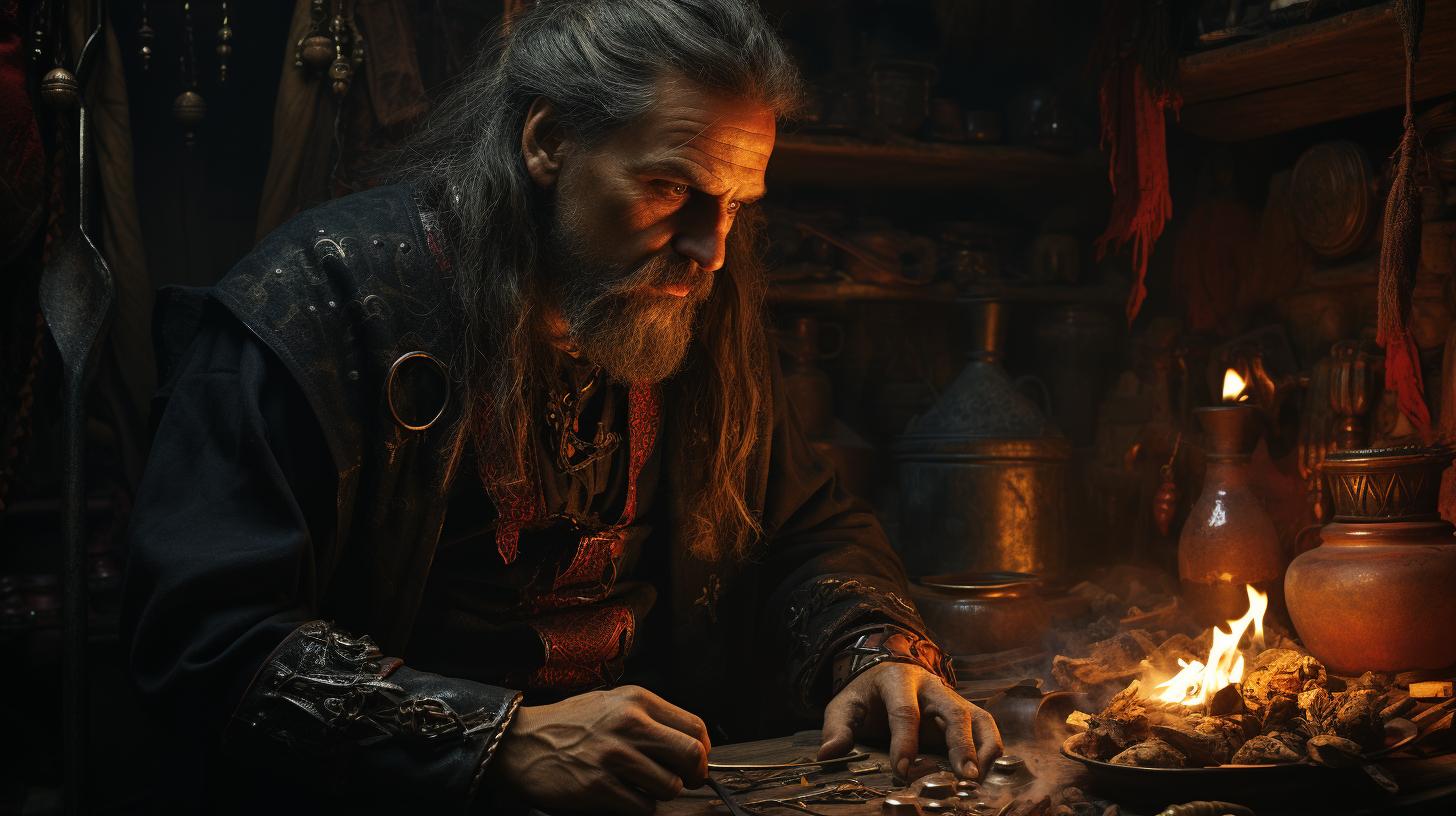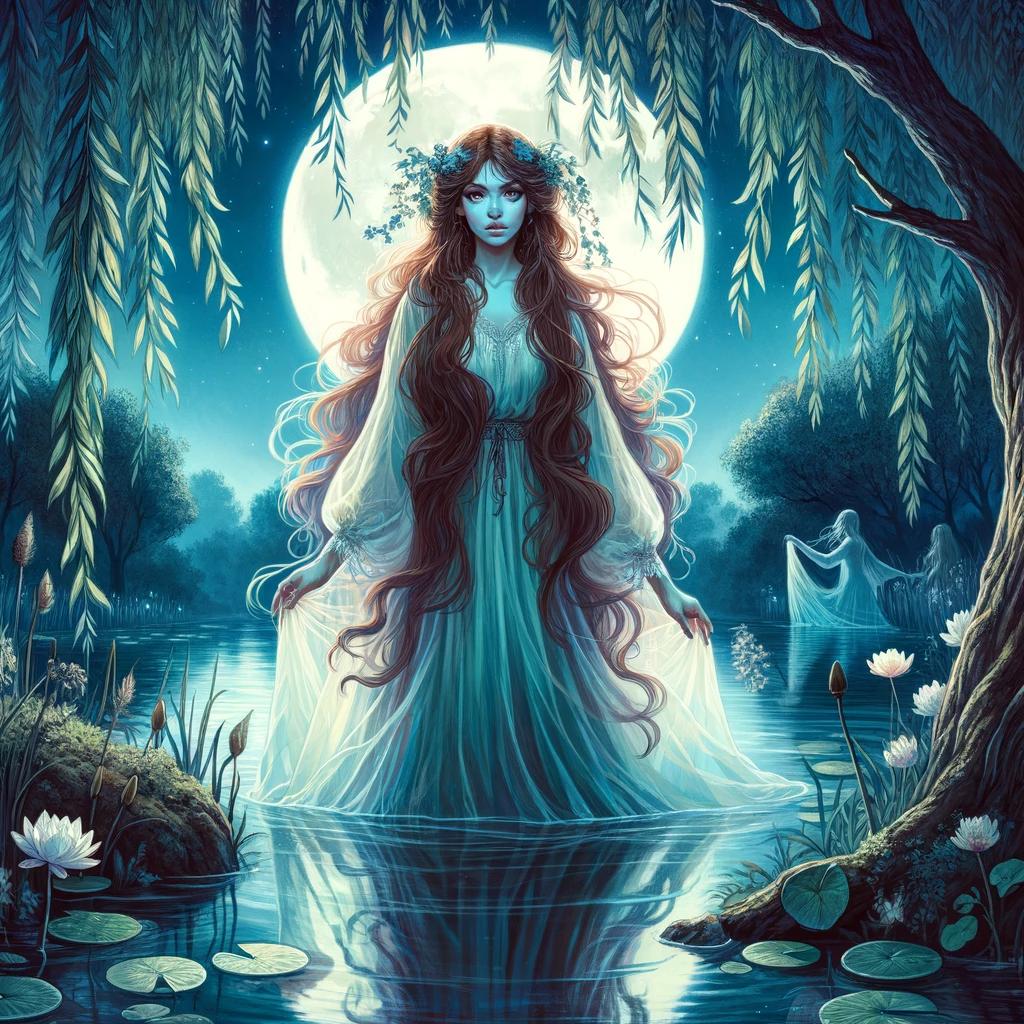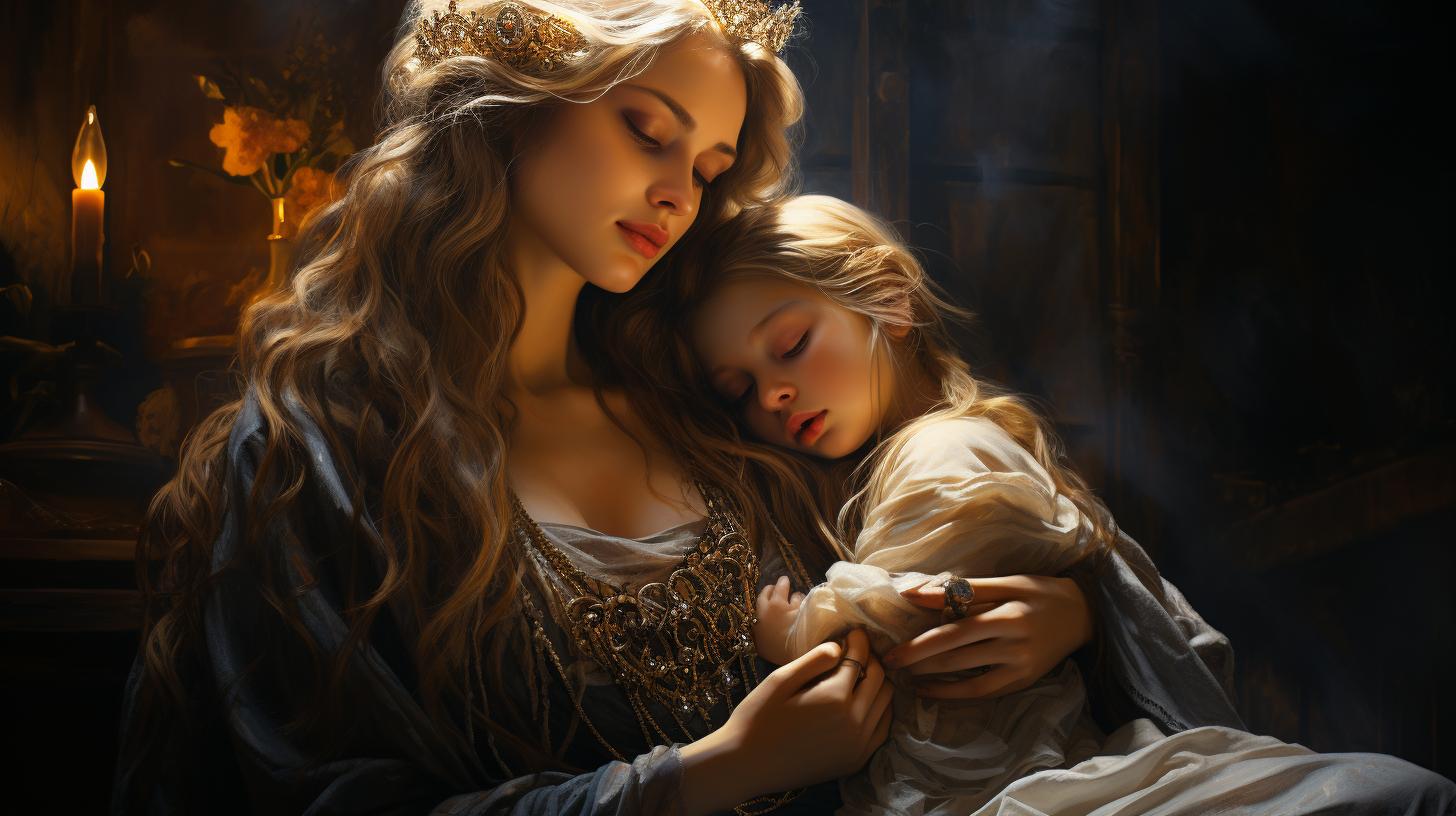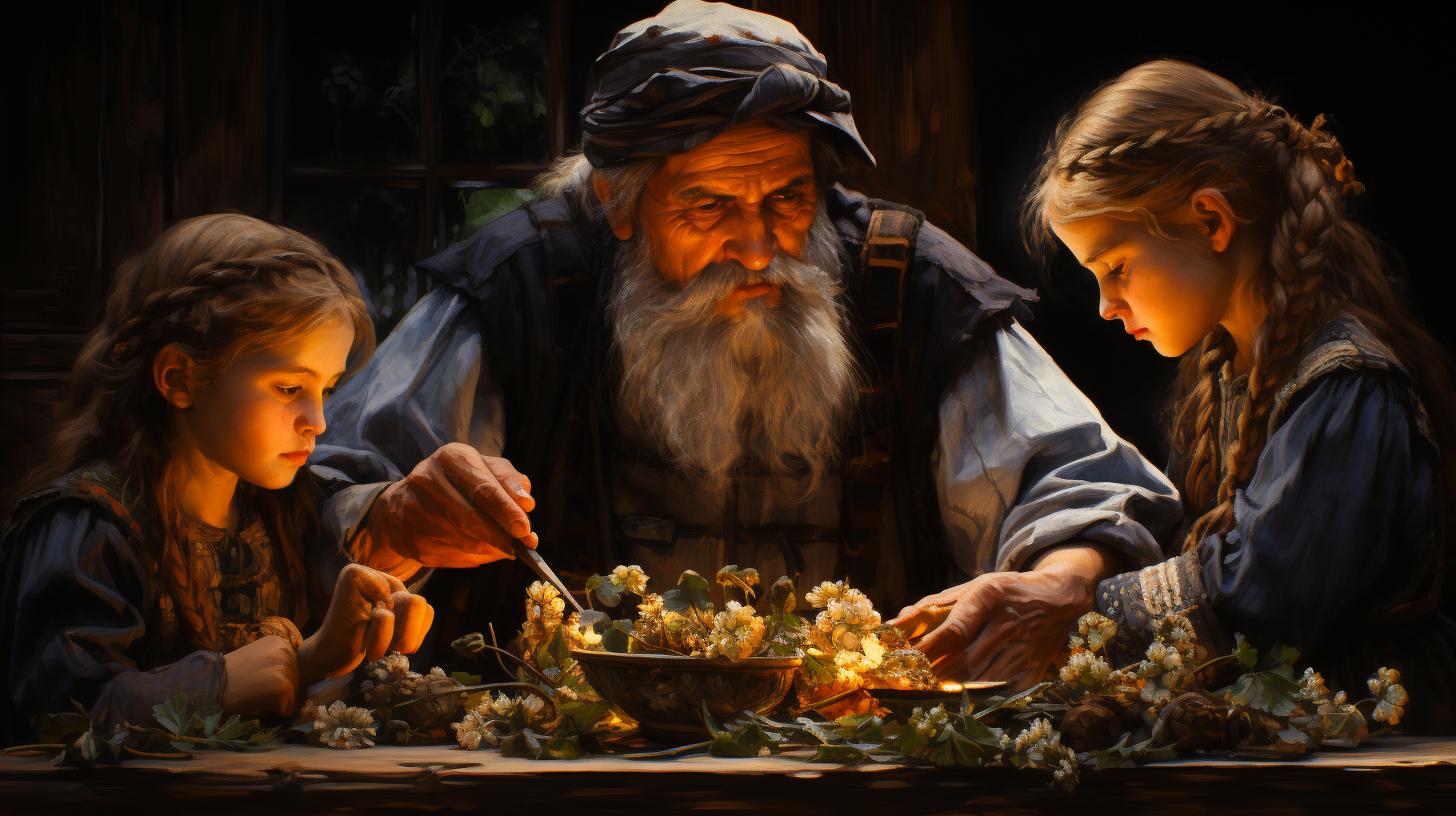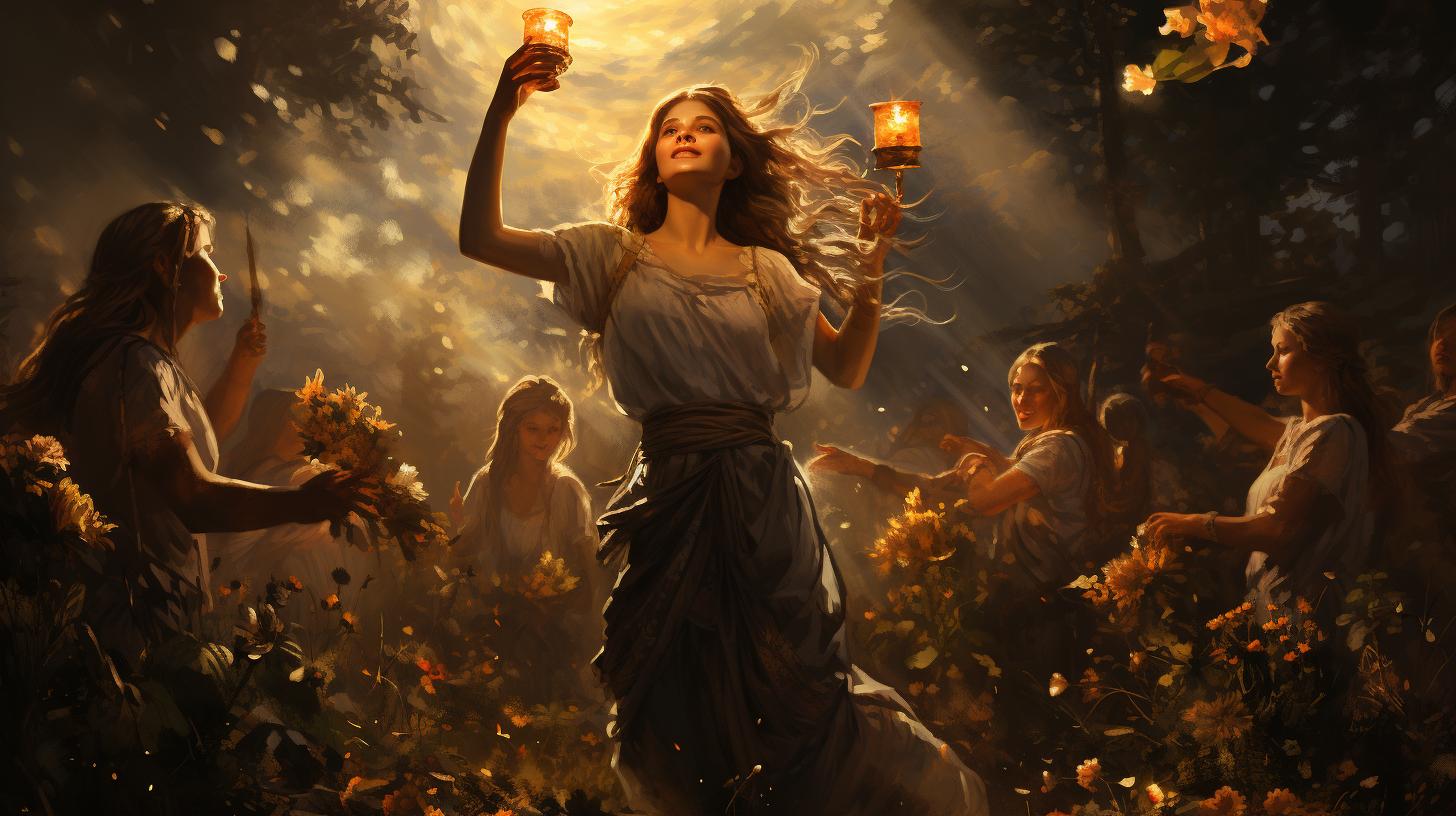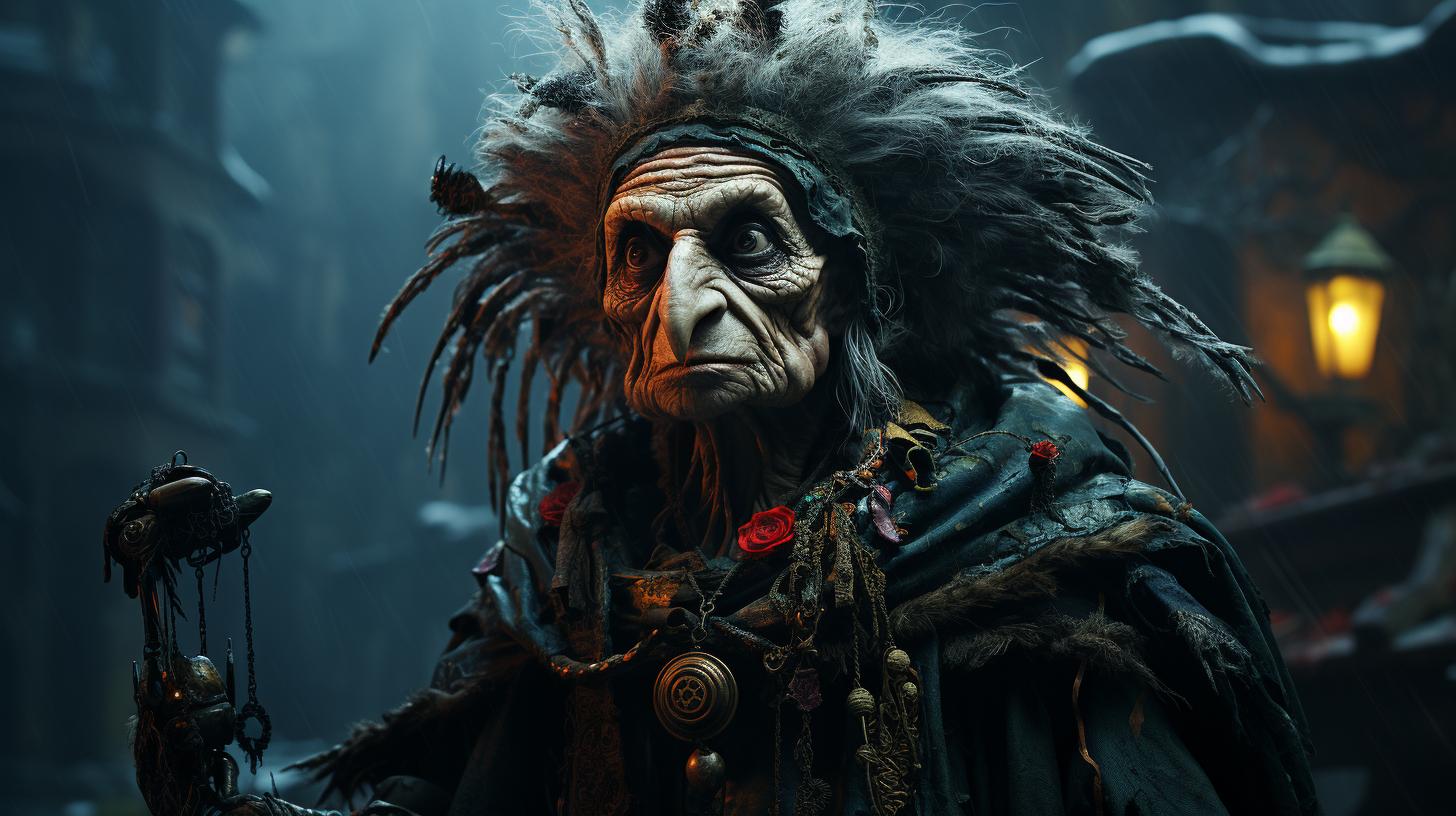Belobog: Exploring the Slavic God of Light and Good Fortune
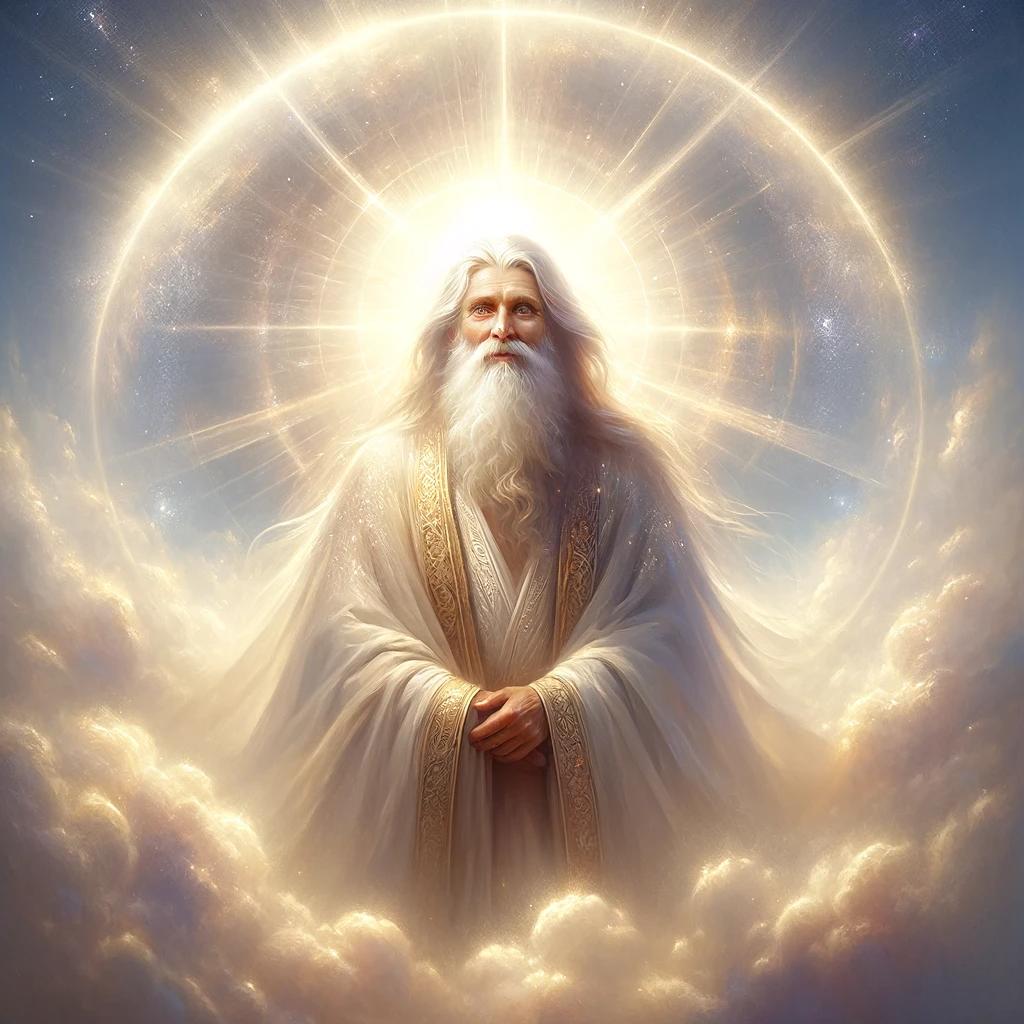
Chernobog and Belobog are two deities from Slavic mythology, with differing historical mentions and interpretations. Chernobog, associated with misfortune, is mentioned in early Latin records, while Belobog’s existence lacks reliable sources.
The academic community is divided on their status and whether they were actual figures in Slavic mythology. Chernobog appears in various cultural practices and media, while Belobog’s references are later and uncertain.
These gods’ significance in Slavic mythology and their portrayal in popular culture help to introduce and promote the mythology, despite the uncertainty surrounding their existence.
Origins and Historical Mention of Chernobog and Belobog
Belobog and Chernobog are two deities from Slavic mythology that have fascinated scholars and researchers.
This section explores their origins and the historical references concerning their existence.
Early References in Latin Records
The earliest mentions of Chernobog can be found in Latin records. In these texts, Chernobog is referred to as Zcerneboch or Zcerneboth. Helmold, a German monk and chronicler from the 12th century, documented the worship of Chernobog among the Wagri and Obodrites, Slavic tribes in the region.
It was during festivities and celebrations that the Slavs would raise a cup and offer words in honor of the two gods, the good and the bad. However, there is a lack of reliable sources confirming the existence of Belobog in these accounts.
Helmold’s Account and the Worship of Chernobog
Helmold’s account provides insight into the religious practices associated with Chernobog. The Slavs revered Chernobog as a deity of misfortune and bad luck. This worship highlights the cultural significance of Chernobog among certain Slavic tribes such as the Wagri and Obodrites.
The details of the rituals and the exact beliefs surrounding Chernobog’s worship may vary, but his presence in these early records establishes his role in Slavic mythology.
Lack of Reliable Sources for Belobog
Unlike Chernobog, Belobog does not appear in reliable sources from the same period.
While there are later references to Belobog, many scholars remain skeptical of their accuracy and authenticity. The absence of reliable sources for Belobog raises questions about this god’s existence within Slavic mythology.
Controversy and Interpretations in Academic Community
The existence of Chernobog and Belobog, as well as their status within Slavic mythology, have been topics of ongoing debate and controversy among scholars. Some argue that Chernobog may have been an epithet for Satan, while Belobog might have been created later as a counterpart to Chernobog. Another interpretation suggests that Chernobog and Belobog were pre-Christian deities with distinct roles and characteristics.
However, there are also theories proposing that Chernobog and Belobog are pseudo-deities that were neither part of pagan nor Christian vocabulary.
Given the lack of consensus among scholars, the understanding of Chernobog and Belobog in Slavic mythology remains elusive.
Nonetheless, their ongoing popularity in popular culture and depiction in various forms of media contribute to the dissemination and awareness of Slavic mythology, despite the uncertainties surrounding their authenticity.
Associations and Characteristics of Chernobog
Chernobog, a prominent figure in Slavic mythology, is often depicted as a god of misfortune.
He is associated with darkness, chaos, and the negative aspects of life. Let’s explore some key aspects of Chernobog’s associations and characteristics:
Chernobog as a God of Misfortune
Chernobog’s role as a deity of misfortune is deeply rooted in Slavic beliefs.
He is believed to bring bad luck, curses, and darkness into people’s lives. In ancient Slavic traditions, people would engage in rituals and offerings to appease Chernobog and mitigate the effects of his malevolent influence.
Cultural Practices and Beliefs around Chernobog
Throughout history, various cultural practices and beliefs have emerged surrounding Chernobog. Slavic communities would hold festivals and celebrations in honor of both Chernobog and Belobog, engaging in rituals and prayers to seek protection from the deity’s negative influence.
The act of passing a cup and offering prayers in the names of both the good and bad gods was a common practice.
Comparison with Other Dark Deities in Slavic Mythology
Chernobog’s characteristics and role bear similarities to other dark deities in Slavic mythology.
Comparisons can be drawn with Zernebog and Zcerneboth, who are often seen as counterparts to Chernobog. These dark gods represent the duality of the world, with Chernobog embodying darkness and chaos, while Belobog represents light and good.
Understanding the associations and characteristics of Chernobog provides insight into the complexities of Slavic mythology and the contrasting forces at play within their belief system.
Belobog and its Uncertain Existence
Belobog, unlike Chernobog, lacks reliable historical references and its existence in Slavic mythology is surrounded by uncertainty.
This section explores the limited information available about Belobog and examines various perspectives on its origin and significance.
Late References and Doubts about Belobog
Unlike Chernobog, Belobog is not mentioned in early Latin records or trustworthy sources. Instead, references to Belobog appear later in historical accounts, leading to doubts about its authenticity as a Slavic deity.
Possible Christian Influences on Belobog’s Concept
Some scholars suggest that Belobog may have emerged as a concept influenced by Christianity. It is believed that Belobog was created as a counterpart to Chernobog, representing light and goodness to contrast the dark and malevolent nature of the latter.
Theoretical Explanations for Belobog’s Creation
In the absence of concrete evidence, several theories attempt to explain the creation of Belobog. One theory proposes that Belobog was an invention by early Slavic tribes to balance the opposing forces of good and evil within their mythology.
Another theory suggests that Belobog was a later addition to Slavic folklore, influenced by neighboring cultures and religious beliefs.
- The lack of reliable sources hinders a comprehensive understanding of Belobog’s existence in Slavic mythology.
- Belobog’s late references raise questions about the authenticity of this deity.
- Possible Christian influences suggest the creation of Belobog as a divine counterpart to Chernobog.
- Theoretical explanations propose that Belobog was a construct to balance opposing forces or a later addition to Slavic folklore influenced by external cultures.
Despite the uncertainty surrounding Belobog’s existence, its inclusion in cultural works and media has contributed to the dissemination and interest in Slavic mythology.
However, caution should be exercised when incorporating Belobog into fictional narratives due to the lack of solid evidence in Slavic mythology.
Cultural Significance and Representations of Chernobog and Belobog
Chernobog and Belobog, despite their uncertain existence in Slavic mythology, have left a lasting impact on popular culture.
Their portrayal in various mediums such as music, literature, and video games has helped to popularize and bring awareness to Slavic mythology.
Chernobog and Belobog in Popular Culture
The enigmatic nature of Chernobog and Belobog has captured the imagination of many artists and creators, leading to their inclusion in popular culture. From contemporary artwork to iconic music performances, both gods have found their place in the cultural landscape.
Examples:
- Artwork depicting the contrasting figures of Chernobog and Belobog, often symbolizing the eternal struggle between light and darkness.
- Music compositions inspired by Slavic mythology featuring references to Chernobog and Belobog, offering a deeper sense of mysticism and folklore.
- Fashion designs incorporating the motifs and symbols associated with Chernobog and Belobog, creating a unique fusion of ancient mythology and modern aesthetics.
Literary Works and Video Games Featuring Chernobog and Belobog
Chernobog and Belobog have also found their way into the realms of literature and video games, allowing audiences to further explore their mythical significance and iconic duality.
Literary Works:
- Novels and short stories where Chernobog and Belobog play pivotal roles, influencing the narrative and shaping the characters’ beliefs and actions.
- Poetic works celebrating the contrasting powers of Chernobog and Belobog, representing the eternal struggle between good and evil.
Video Games:
- Role-playing games featuring Chernobog and Belobog as deities with unique abilities, offering players a chance to interact with these legendary figures within immersive virtual worlds.
- Strategy games incorporating the concept of Chernobog and Belobog as opposing forces, providing players with interesting storylines and moral choices.
Impact on the Perception of Slavic Mythology
The inclusion of Chernobog and Belobog in popular culture has had a significant impact on the perception and understanding of Slavic mythology.
Through their representation, people are introduced to the rich tapestry of Slavic folklore, inspiring further exploration and research into this ancient belief system.
By encountering Chernobog and Belobog through various artistic forms, individuals gain a glimpse into the worldview and values of the Slavic people, enhancing cultural appreciation and fostering a deeper connection with their heritage.
In summary, the study of Chernobog and Belobog in Slavic mythology has presented numerous challenges due to the lack of reliable sources and varying interpretations. Here are the key points discussed:
Early References in Latin Records
Chernobog is mentioned in Latin records as Zcerneboch and Zcerneboth, with Helmold’s account highlighting the worship of Chernobog by the Wagri and Obodrites.
However, there are no trustworthy sources specifically mentioning Belobog.
Lack of Reliable Sources for Belobog
Belobog’s existence in Slavic mythology remains uncertain, as no credible records provide substantial information about this deity. It is believed that Belobog may have been created as a counterpart to Chernobog.
Controversy and Interpretations in Academic Community
The academic community is divided regarding the status and existence of Chernobog and Belobog in Slavic mythology.
Different theories have been proposed, including their association with Satan, their interpretation as genuine Slavic deities, their Christian influences, or their status as pseudo-deities.
5Cultural Significance and Representations of Chernobog and Belobog
Chernobog and Belobog, despite the uncertain nature of their existence in Slavic mythology, have gained popularity in popular culture, appearing in various literary works, video games, and other media.
Their inclusion in these mediums contributes to the familiarity and dissemination of Slavic mythology among broader audiences.
Chernobog and Belobog in Popular Culture
Both Chernobog and Belobog have become recognizable figures in popular culture, often depicted as opposing forces of good and evil or as symbolic entities representing light and darkness. Their portrayal in various forms of media has contributed to their enduring presence in contemporary society.
Literary Works and Video Games Featuring Chernobog and Belobog
Authors and game developers have incorporated Chernobog and Belobog into their creations, exploring their mythical attributes and weaving them into captivating narratives. This not only showcases the creativity of artists but also serves as a bridge between ancient mythology and modern storytelling.
Impact on the Perception of Slavic Mythology
The inclusion of Chernobog and Belobog in popular culture diversifies and expands the awareness of Slavic mythology beyond academic circles. While the existence of these deities remains uncertain, their presence in contemporary media fosters curiosity and interest in Slavic mythological traditions.
Final Thoughts on Chernobog and Belobog in Slavic Mythology
As we conclude our exploration of Chernobog and Belobog, it is evident that their status and existence remain subjects of debate in the academic community. While various interpretations and theories exist, the lack of reliable sources hinders definitive conclusions.
However, their inclusion in popular culture offers a platform for wider exposure and appreciation of Slavic mythology, despite the need for caution and careful consideration of the limited evidence available.
.











